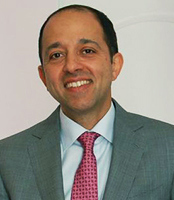In a previous post, we introduced some procedures required for repair of a cleft lip and/or palate. Those surgeries reconstructed the groove between the nostrils and upper lips; the border between reddish lips and normal skin; the nostril area and the muscles of the mouth and lips. Sometimes, further surgical corrections are required. They may include the following.
Alveolar Bone Grafts
When a child’s cleft affects the dental ridge of the upper jaw, bone grafting is often necessary. Bone grafting is a procedure involving the transference of bone material from one area of the body to another. For example, cancellous bone, which is light and porous, can be harvested from the hip area and placed in the area of the cleft near the teeth. The bone tissue will then begin to regenerate and build new bone in the area.
Bone grafting is most successful in patients under 10 years old and is performed on patients as young as 5 or 6 years old as the front incisor teeth are erupting. (Dental x-rays show the development of the permanent teeth.) Although older patients may also benefit from a bone graft, the results are not as good, especially if the patient is a smoker, has a systemic disease such as diabetes or has poor oral hygiene.
Once the bone graft has been placed, one of three options will be implemented to replace missing teeth. Teeth positioned adjacent to the bone graft will be moved into the graft area; a prosthetic replacement called a dental bridge may be used; or dental implants will be inserted. The dental specialists on the cleft palate team will advise which option is best for the patient.
A bone graft to the dental ridge serves several different purposes. It supports teeth that have not yet grown in and those that are next to the cleft. It provides symmetry to the face and supports the lip and nose. It creates a more natural appearance by forming a contiguous upper gum line. The front part of the roof of the mouth becomes stabilized, especially when a bilateral cleft is present. Even when the bone graft is placed after the permanent teeth have erupted, between the ages of 10 and 12 in most cases, it may still be useful for support purposes.
An alveolar bone graft generally involves a one-night hospital stay. Some hip discomfort is common after the procedure, making the child reluctant to get up and walk around. A soft diet and restriction from strenuous activities is recommended for 10 days following the procedure. This article from the Cleft Lip and Palate Association provides additional details www.clapa.com/medical/article/336/.
Velopharyngeal Insufficiency
Sometimes speech problems caused by clefts require surgical correction. The soft palate, sides of the throat and back of the throat work together to close off the opening between the mouth and nose during speech. This is known as the velopharyngeal valve. In Velopharyngeal dysfunction (VPD), the velopharyngeal valve does not close consistently and completely during the production of oral sounds. Resulting speech problems include hypernasality (too much sound in the nasal cavity), nasal air emission (leakage of air during consonant production) and compensatory articulation productions, which affects speech intelligibility
Some children after cleft palate repair will continue to exhibit hypernasal speech. Short sentences may sound relatively normal, but sustained speech becomes increasingly hypernasal as the palate tires. When this happens, the cleft palate team may recommend surgical intervention to help with the soft palate closure. There are several approaches and a correct diagnosis is necessary to determine whether surgery, speech therapy, or both is the appropriate treatment.
Surgical procedures for correction of velopharyngeal insufficiency include pharyngeal flaps, where the posterior pharyngeal wall is elevated and sutured to the soft palate. This reduces the gap formed from a short or poorly functioning soft palate. Other surgical approaches involve alteration of the anatomy surrounding the soft palate and posterior pharyngeal wall. The patient’s surgeon and speech pathologist will confer on the best treatment.
The timing of surgery ranges from pre-school to late teens. Early diagnosis and speech therapy is a critical prelude to surgical intervention. When work with a speech pathologist produces no additional correction in speech patterns and sounds, consideration for surgical repair should be made. The American Speech and Hearing Association www.asha.org is one source for more detailed information about VPD.
 Kayvon Haghighi, DDS, MD, FACS is licensed to practice both medicine and dentistry in the state of New Jersey. Dr. Haghighi’s unique combination of surgical training and experience in facial reconstruction enables him to analyze your condition from multiple points of view.
Kayvon Haghighi, DDS, MD, FACS is licensed to practice both medicine and dentistry in the state of New Jersey. Dr. Haghighi’s unique combination of surgical training and experience in facial reconstruction enables him to analyze your condition from multiple points of view.
